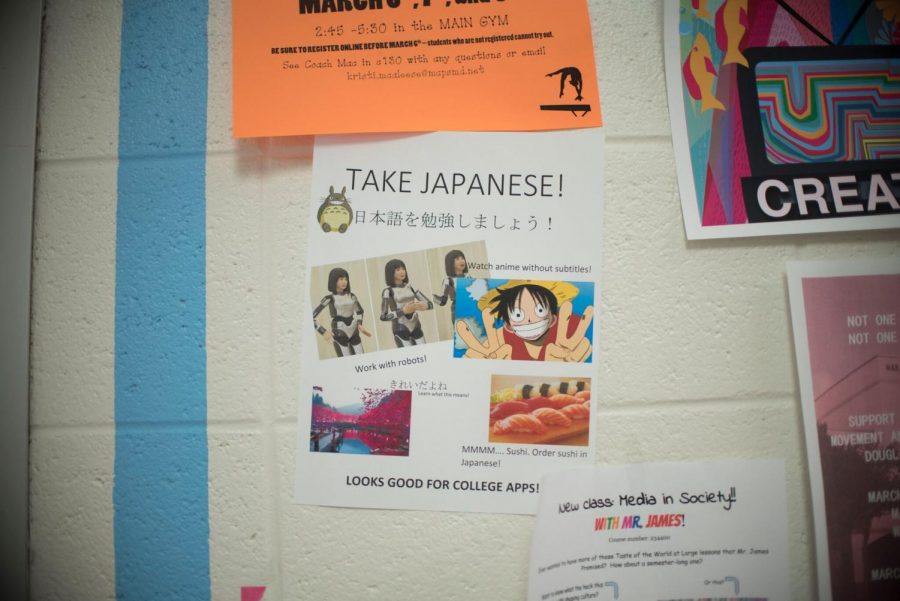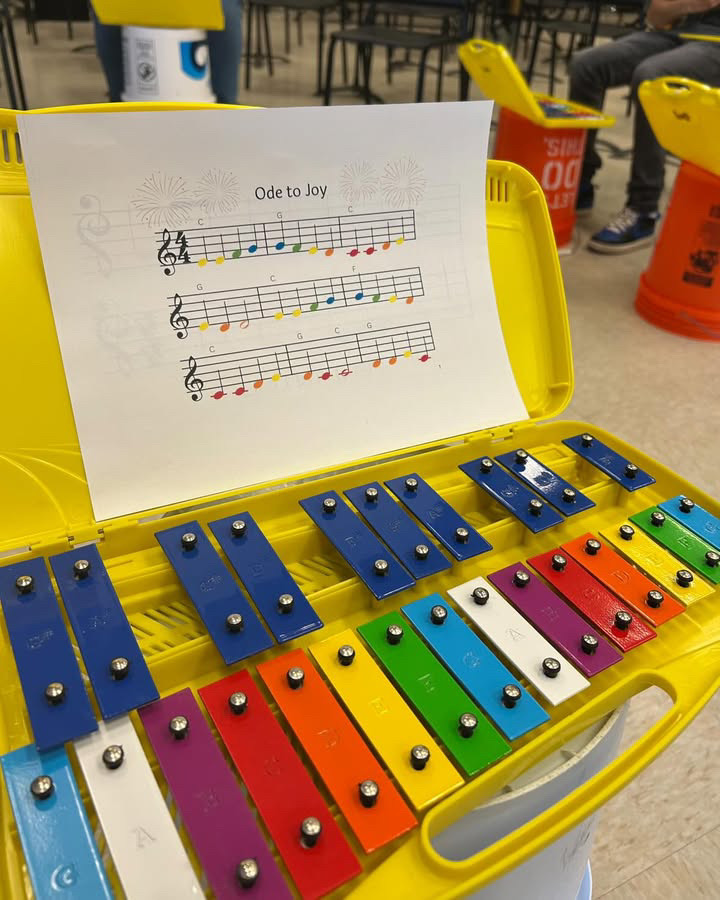Teachers recruit students to take uncommon classes
Many teachers hang flyers on the walls to get students interested in their courses. All types of classes do this, varying from Japanese to Philosophy. Photo by Annabelle Gordon.
March 8, 2018
Every year, counselors visit English classes to discuss the coming year’s registration. Students debate the merits of different classes and teachers, and flyers beckon students to take a wide range of courses such as Japanese, Art History and Philosophy.
Whitman offers what feels like endless course options in every subject and at every level, but with such a varied selection, some teachers struggle to fill even one class period of a less-popular course. In an effort to keep registration up, many teachers try to recruit students to their classes using flyers, posters and visits to potential feeder classes.
Many teachers feel the best approach is to talk to students in feeder classes for their course. Multivariable Calculus teacher Susan Wildstrom sends students to both AB and BC Calculus classes to spread information about MV’s curriculum and expectations.
“I’m neither recruiting for my class nor am I trying to discourage people,” Wildstrom said. “I just want them to have a sense of what it really is, and that usually is what does it.”
Some teachers want their students to have a genuine interest in their course and allow students to come to them. Philosophy teacher Colin O’Brien draws students in by trying to make his class interesting and engaging, building its good reputation.
“Electives shouldn’t be overwhelming and super hard,” O’Brien said. “Students should go there and enjoy learning it.”
Some teachers recognize that their classes have lower rates of enrollment due to perceptions that the class is more difficult than other options, making recruiting students more difficult. Often, parents are hesitant to encourage their kids to take such classes, Japanese teacher Yukiyo Moorman said.
“Parents are very intimidated and concerned that if they take Japanese, their child will fail, which is not true at all because the failure rate of Japanese compared to Spanish is much lower,” she said.
Although teachers attempt to spread the word about their classes, many students find out about such classes when they turn to the course catalog to fill a hole in their schedule. Junior Samantha Goldberg discovered Comparative Religions when she needed a one-semester class after completing Health.
“I didn’t want to take the basics of art and stuff that everybody takes, so I looked deeper into it and found Comparative Religions,” she said. “I feel like the class gave me so much more knowledge than in math or anything else I take here.”











